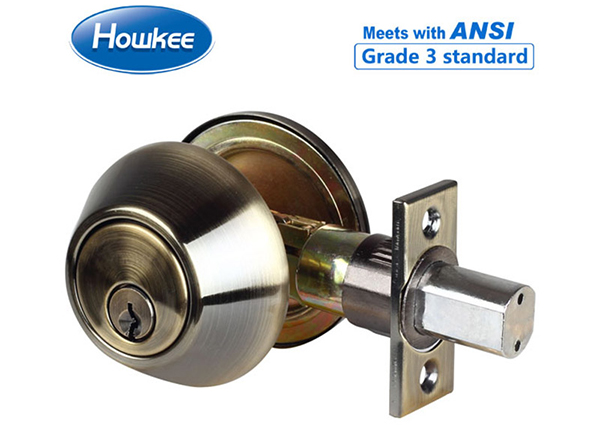






20 years OEM experience with North American Builders, REO contractors & Wholesalers.
ZHONGSHAN GHL HARDWARE PRODUCTS CO., LTD.
Troubleshooting Residential Deadbolts
Pulished on Oct. 16, 2024Deadbolts are an essential security feature in most residential properties, providing an additional level of protection against unauthorized entry. However, deadbolts can experience problems that can compromise their effectiveness, and it's important to troubleshoot and fix these issues promptly.

Residential Deadbolt D101AB (DI LATCH)
Here are some common problems with deadbolts and how to troubleshoot them:
Difficulty turning the key
If you're having trouble turning the key in the deadbolt, it may be due to several reasons. First, the key may be damaged or worn out. Try using a different key to see if the problem persists. If the key still doesn't turn, it's possible that the deadbolt is misaligned, which can make it difficult to turn the key. To fix this, loosen the screws that hold the deadbolt in place and adjust its position until it's properly aligned. Tighten the screws back in place and test the key again.
Loose deadbolt
A loose deadbolt can be a significant security risk. If you notice that the deadbolt is loose and wiggles when you try to open or close it, the screws holding it in place may be loose. Tighten these screws with a screwdriver until the deadbolt is firmly in place. If the screws won't tighten, it's possible that the screw holes have become stripped. In this case, you may need to replace the deadbolt.
Sticking deadbolt
If the deadbolt sticks when you try to open or close it, it may be due to several reasons. First, it may be dirty or clogged with debris. Clean the deadbolt with a dry cloth and try lubricating it with a silicone spray lubricant to help it slide more smoothly. If the deadbolt still sticks, it may be misaligned. Follow the steps in #1 to adjust the deadbolt's position.
Deadbolt won't lock
If the deadbolt won't lock, it may be due to several reasons. First, the strike plate may be misaligned, preventing the deadbolt from properly locking into place. Check the alignment of the strike plate and adjust it as necessary. If the strike plate is damaged, replace it with a new one. If the deadbolt still won't lock, check the alignment of the deadbolt itself, and adjust it if necessary.
Key won't come out of the lock
If the key won't come out of the lock, it may be due to several reasons. First, the deadbolt may be misaligned, preventing the key from turning all the way. Follow the steps in #1 to adjust the deadbolt's position. If the deadbolt is properly aligned, the problem may be with the lock mechanism itself. Try lubricating the lock with a silicone spray lubricant to help the key slide out more easily. If the problem persists, you may need to replace the lock mechanism.
Deadbolt turns but doesn't lock
If the deadbolt turns but doesn't lock, it may be due to several reasons. First, the strike plate may be misaligned, preventing the deadbolt from properly locking into place. Check the alignment of the strike plate and adjust it as necessary. If the strike plate is damaged, replace it with a new one. If the deadbolt is properly aligned, the problem may be with the lock mechanism itself. Try lubricating the lock with a silicone spray lubricant to help it slide more easily. If the problem persists, you may need to replace the lock mechanism.
In conclusion, troubleshooting residential deadbolts can be a relatively simple task that can prevent significant security issues from arising. However, if you're unsure about how to fix the problem or if you don't have the necessary tools and experience, it's always best to call in a professional locksmith to help you. For more information, please contact us. We will provide professional answers.
-
+86 760 2223 1729
-
+86 130 8586 8365
-
+86 760 2388 0090
-
No. 13 Chuangye Rd, Zhu Yuan, Xiao Lan, Zhongshan, Guangdong Province, P.R.China
Copyright © Zhongshan GHL Hardware Products Co., LTD All Rights Reserved | Sitemap






